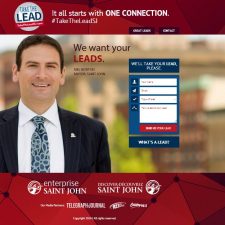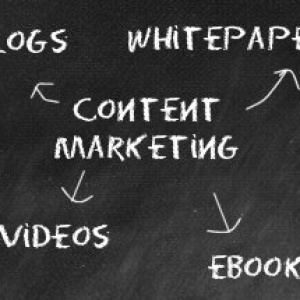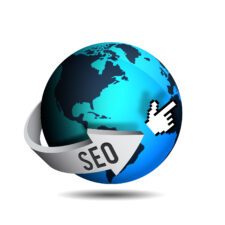 Your company website can, and should, be an important source of new leads for your sales team.
Your company website can, and should, be an important source of new leads for your sales team.
As you expand, and look to generate leads and sales beyond your local region, a website allows your company to reach new potential customers without duplicating your sales and marketing efforts in every market.
A great lead generating website will reach prospects regardless of whether they are in your own state/province…or the other side of the country.
If your current company website is not generating leads, or you think it could do more, this post will give you a high level idea of how your team can make it happen.
How does your website currently convert qualified visitors into leads?
When it comes to generating leads, the typical website I see has little more than a “contact us” page. Some take it a step further with a basic “request a quote” tool.
These calls-to-action are important…but for the most part, will only be attractive to buyers in the decision stage of the sales cycle. Considering that 96% of the visitors to your website aren’t ready to buy (yet), you need to offer something else to get them into your database.
An effective lead gen strategy involves creating paths to conversion at each stage of the buyer’s journey, so that 96% doesn’t fall through the cracks!
But Wait – What Is the Buyer’s Journey?
The Buyer’s Journey is the active research process a buyer takes leading up to purchase. Research by SiriusDecisions found that 67% of the buyer’s journey is now done digitally.
To convert the self-educated buyer into a lead, your company needs digital content that promises to be so helpful and informative that your ideal customers will give their contact information in exchange for it.
What does the buyer’s journey look like, and what type of content is useful? Read on to find out…

Stage 1: Awareness
At the awareness stage the buyer is aware that they have a pain. They have begun their search for vendor-neutral information and advice that will help them diagnose and solve their problem.
For a shredding company, a lead at the awareness stage could be a medical clinic searching for information about HIPAA compliance.
Great lead generating content for a buyer at this stage will be in the form of downloadable ebooks, how-to-guides, research reports and tip sheets.
Content example: “5 Steps to HIPAA Compliance for Medical Clinics”.
Stage 2: Consideration
Once the buyer has clearly identified their need, their research switches focus to understanding all the possible solutions to their problem.
For the same medical clinic and your shredding company, a consideration stage buyer knows they need to securely shred their documents and is researching solutions and/or vendor services.
Content example: “Complete Guide to Choosing a Shredding Company for Your Medical Clinic”.
Stage 3: Decision
At the decision making stage the buyer has decided on a solution or plan and is now taking a focused approach to narrow down their choices and choose a vendor.
Great lead generating content at the decision stage includes live demos, case studies, vendor or product comparisons and literature about your products.
Content example: “Interactive Build a Quote Tool”.
Turning Content Into Leads
Next we need to put that great content to work converting qualified website visitors into leads. Did you notice that I used the word “qualified”? A natural result of creating content that is targeted to your ideal customers is that in most cases, the person downloading it is going to be an ideal customer.
Consider the example I gave for awareness stage lead generating content for a shredding company. If medical clinics are an ideal client, a document titled “5 Steps to HIPAA Compliance for Medical Clinics” is going to attract the right audience.
To keep things simple in the beginning, I recommend starting with three pieces of content targeted to your primary ideal customer…one content item for each stage of the buyer’s journey.
This content is then promoted and available to download via pages on your website (usually called a “landing page”). Calls-to-action are placed throughout your website to capture visitors’ attention and draw them to your landing page and offer.
Visitors interested in the content will fill out a form, including their contact details so you can email them the white paper, call them to schedule a demo or send them the literature they requested.
The Bottom Line
Yes, your website can be a reliable source of leads. 65% of B2B buyers surveyed by DemandGen reported that their solution research starts with online sources.
An effective lead gen strategy acknowledges that most of the visitors who land on your website aren’t ready to buy yet. In order to capture the contact details of early-stage buyers the successful company will publish content for buyers at every stage of their journey.














Comments are closed.